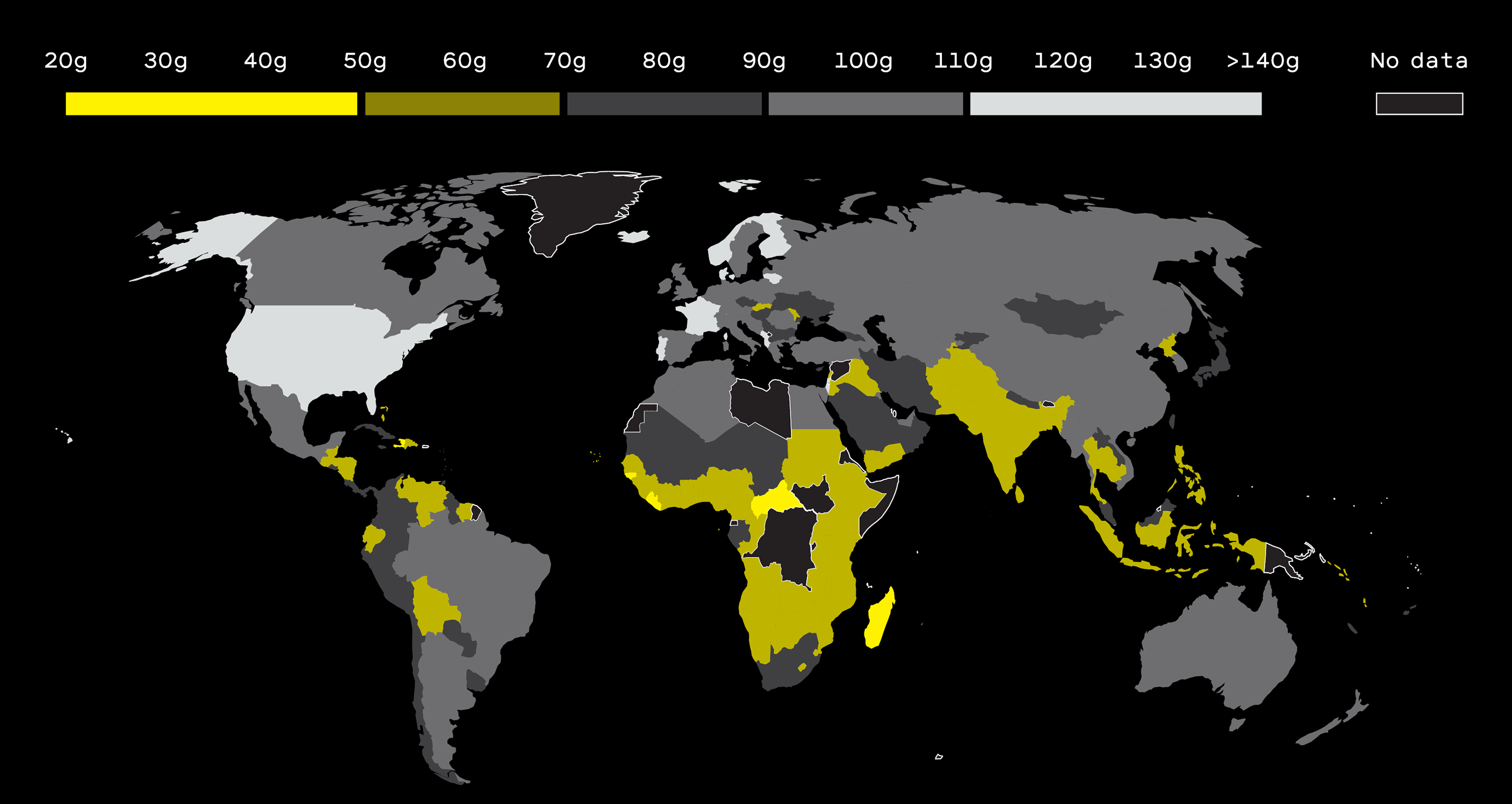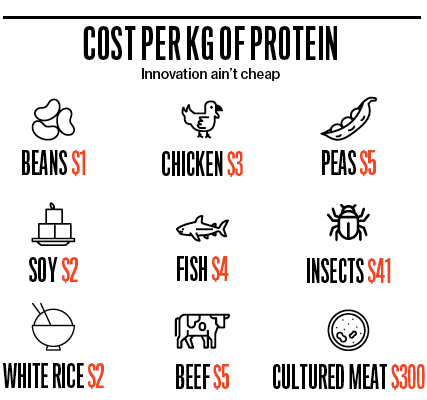Many people eat too much protein, and many others suffer from a lack of it

Our eating habits say a lot about us, and nowhere is that more true than in how we consume protein. Nearly a fifth of the world’s population doesn’t get enough of it, while people in richer countries take in far more than they need. People also tend to eat more meat as they get wealthier. That has big consequences for the environment: raising livestock requires huge amounts of land and crops and now creates nearly 20% of global greenhouse-gas emissions.
The United States and Europe have been stubbornly addicted to meat for decades, eating far more than the 50 grams per person per day that is the average requirement.
And China and Brazil have indeed upped their taste for flesh as their economies have grown:
But people aren’t necessarily fated to become carnivores as they rise from poverty. India’s population of over 1 billion people hasn’t changed its meat-eating habits much:
It’s food for thought for any meat-eater.
About 2/5 of the land on earth (excluding Antarctica) is used to make food, and changing land use to feed cows and sheep that people then eat has an outsize impact:
Greener alternatives like insects and cultured meat get a lot of attention, but they’re still far pricier than commodity meats (and usually not nearly as tasty).

Asking entire cultures to abandon meat isn’t realistic. But neither is our current pace of consumption. We’re going to have to trim from somewhere.
Component"undefined"is not configured.
Deep Dive
Humans and technology
Building a more reliable supply chain
Rapidly advancing technologies are building the modern supply chain, making transparent, collaborative, and data-driven systems a reality.
Building a data-driven health-care ecosystem
Harnessing data to improve the equity, affordability, and quality of the health care system.
Let’s not make the same mistakes with AI that we made with social media
Social media’s unregulated evolution over the past decade holds a lot of lessons that apply directly to AI companies and technologies.
Stay connected
Get the latest updates from
MIT Technology Review
Discover special offers, top stories, upcoming events, and more.